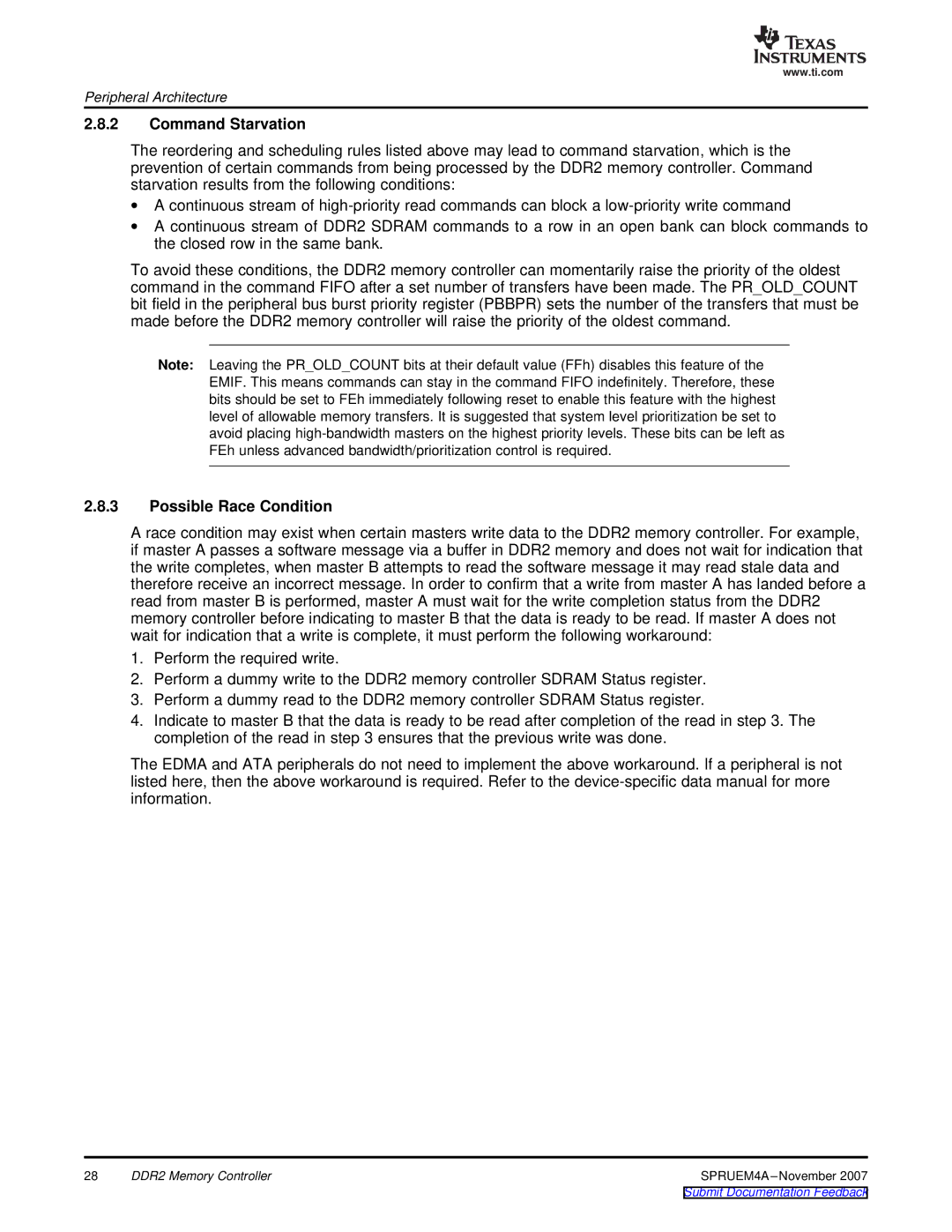
www.ti.com
Peripheral Architecture
2.8.2Command Starvation
The reordering and scheduling rules listed above may lead to command starvation, which is the prevention of certain commands from being processed by the DDR2 memory controller. Command starvation results from the following conditions:
∙A continuous stream of
∙A continuous stream of DDR2 SDRAM commands to a row in an open bank can block commands to the closed row in the same bank.
To avoid these conditions, the DDR2 memory controller can momentarily raise the priority of the oldest command in the command FIFO after a set number of transfers have been made. The PR_OLD_COUNT bit field in the peripheral bus burst priority register (PBBPR) sets the number of the transfers that must be made before the DDR2 memory controller will raise the priority of the oldest command.
Note: Leaving the PR_OLD_COUNT bits at their default value (FFh) disables this feature of the EMIF. This means commands can stay in the command FIFO indefinitely. Therefore, these bits should be set to FEh immediately following reset to enable this feature with the highest level of allowable memory transfers. It is suggested that system level prioritization be set to avoid placing
2.8.3Possible Race Condition
A race condition may exist when certain masters write data to the DDR2 memory controller. For example, if master A passes a software message via a buffer in DDR2 memory and does not wait for indication that the write completes, when master B attempts to read the software message it may read stale data and therefore receive an incorrect message. In order to confirm that a write from master A has landed before a read from master B is performed, master A must wait for the write completion status from the DDR2 memory controller before indicating to master B that the data is ready to be read. If master A does not wait for indication that a write is complete, it must perform the following workaround:
1.Perform the required write.
2.Perform a dummy write to the DDR2 memory controller SDRAM Status register.
3.Perform a dummy read to the DDR2 memory controller SDRAM Status register.
4.Indicate to master B that the data is ready to be read after completion of the read in step 3. The completion of the read in step 3 ensures that the previous write was done.
The EDMA and ATA peripherals do not need to implement the above workaround. If a peripheral is not listed here, then the above workaround is required. Refer to the
28 | DDR2 Memory Controller |
